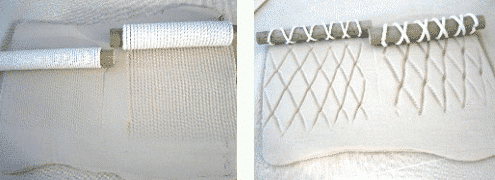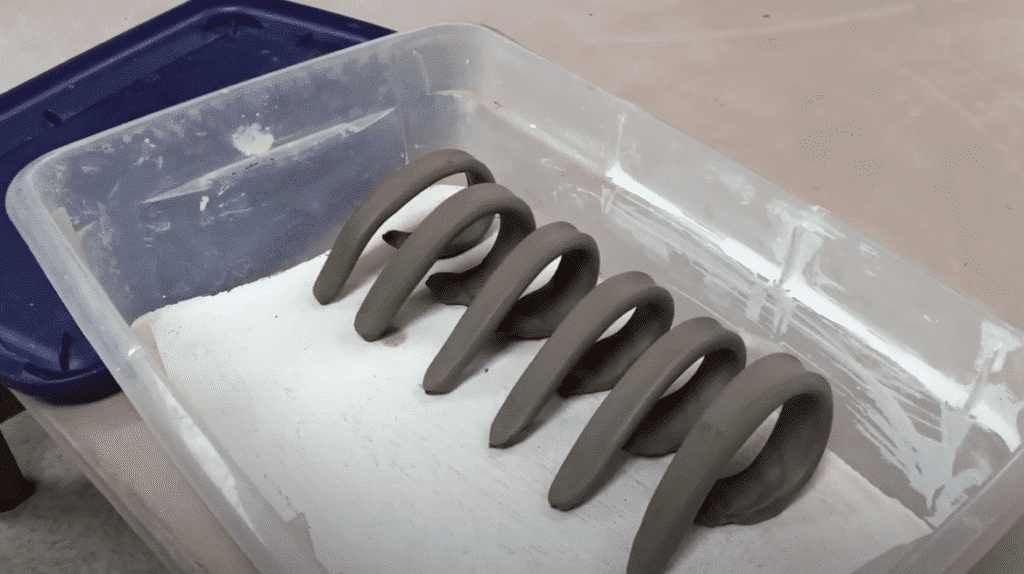A quick look around online revealed three original tools you can easily put together yourself. I for one can’t wait to try them out, because they look very promising!
A ball opener
When throwing a pot on a pottery wheel, it’s important to create a flat base, with the right thickness. Not too thick, not too thin. And if you’re making a set of multiple matching items, it’s even more important to make everything even. American potter Tom Whitaker came up with an creative tool to help with this.

It’s as simple as it is genius, actually. With a few loose PVC parts he created the ball opener, a tool to ensure your bottom has an even thickness, every time. And you’re also not supposed to get any cracks or unevenness in the bottom during the drying process. Sounds fascinating, don’t you think?
In this video, Tom explains how to make a ball opener. And you get the juicy accent for free.
Texture rollers
Anyone who works with handbuilding and with clay slabs knows, that the finishing touch is everything. That’s exactly why a nifty tool can make the difference between a boring and an impeccable end result. With a texture roller, you can press a fine pattern into your clay slabs. You can find them in all colours, shapes and sizes in pottery shops, but … you can also just make your own texture rollers with materials you have around the house.

All you need is an old broomstick that you’ve sawed into pieces, an old rolling pin, or anything else with the right shape, and a roll of thick string. You can create whatever texture you want. Different materials create a different imprint, so the possibilities are endless!
A damp box
Whether you’re throwing or handbuilding, working with clay takes time. Time to create the right shape, to decorate, to attach and to finish. And time is what we often don’t have enough of. Yet with clay it is important to do the work at the right time, when the clay has exaclty the right amount of moisture.
If the clay is too wet, it will stick to your tools and you won’t be able work efficiently. If the clay is too dry, it ends up breaking and makes it difficult to attach any components that still need to be attached. In other words, the right amount of moisture is very important when it comes to ceramics.

To preserve the right moisture level when we don’t have time to finish a piece immediately, you can cover the clay with plastic foil or wrap it in damp rags. But there’s also a more convenient way: the damp box.
This is a sealable plastic box with a bottom layer made from plaster. By adding more or less water to the plaster, you can manipulate the moisture level in the box, which allow you to keep your handles, decorative elements or your pots in leather-hard condition. Just put it in there and you’re done!
Here is a step-by-step guide to making your own damp box, and this video also shows you how to get started.
If you’ve tried making any of these tools, please let us know how it went. And if you have any more ideas, let me know. I’m nothing if not curious!





